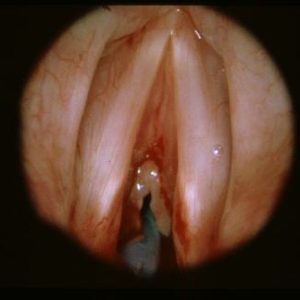An arytenoid dislocation happens when one of the small cartilages in your voice box, called the arytenoid cartilage, gets moved out of its usual place. Arytenoid dislocation can occur because of a rough intubation (when a breathing tube is placed) or a hard hit to the throat. When the arytenoid is out of place, you might notice a hoarse, breathy voice, throat pain, or trouble swallowing. Sometimes, its symptoms can seem very similar to vocal cord paralysis, even though the issue is actually the misplaced cartilage.
Doctors usually check for arytenoid dislocation by looking into your throat with a small camera or doing a CT scan. If they find that the arytenoid is not in its proper position, they often try to fix it with a closed reduction procedure, which gently moves the cartilage back into place. Voice rest, special injections (like Botox), or other therapies might be used afterward to help your voice improve and prevent the problem from coming back.
Laryngeal stenosis means that the airway in your voice box has become too narrow. This narrowing usually happens because of scar tissue that forms after long-term use of a breathing tube or after a throat injury or surgery. When the airway is narrowed, you might have trouble breathing, especially during exercise, or notice your voice becoming weak or breathy. In some cases, the narrowing can be small enough that you only feel slight changes, but in others, it can make it hard to get enough air.
Doctors use tools like endoscopy or CT scans to see exactly where and how much your airway has narrowed. Depending on the severity of the stenosis, treatment can range from medical therapy and laser procedures to more involved surgeries. The goal is to remove or reduce the scar tissue so that the airway opens up again, helping you breathe easier and restoring a better voice quality.

Laryngeal Stenosis

 YouTube Channel
YouTube Channel
